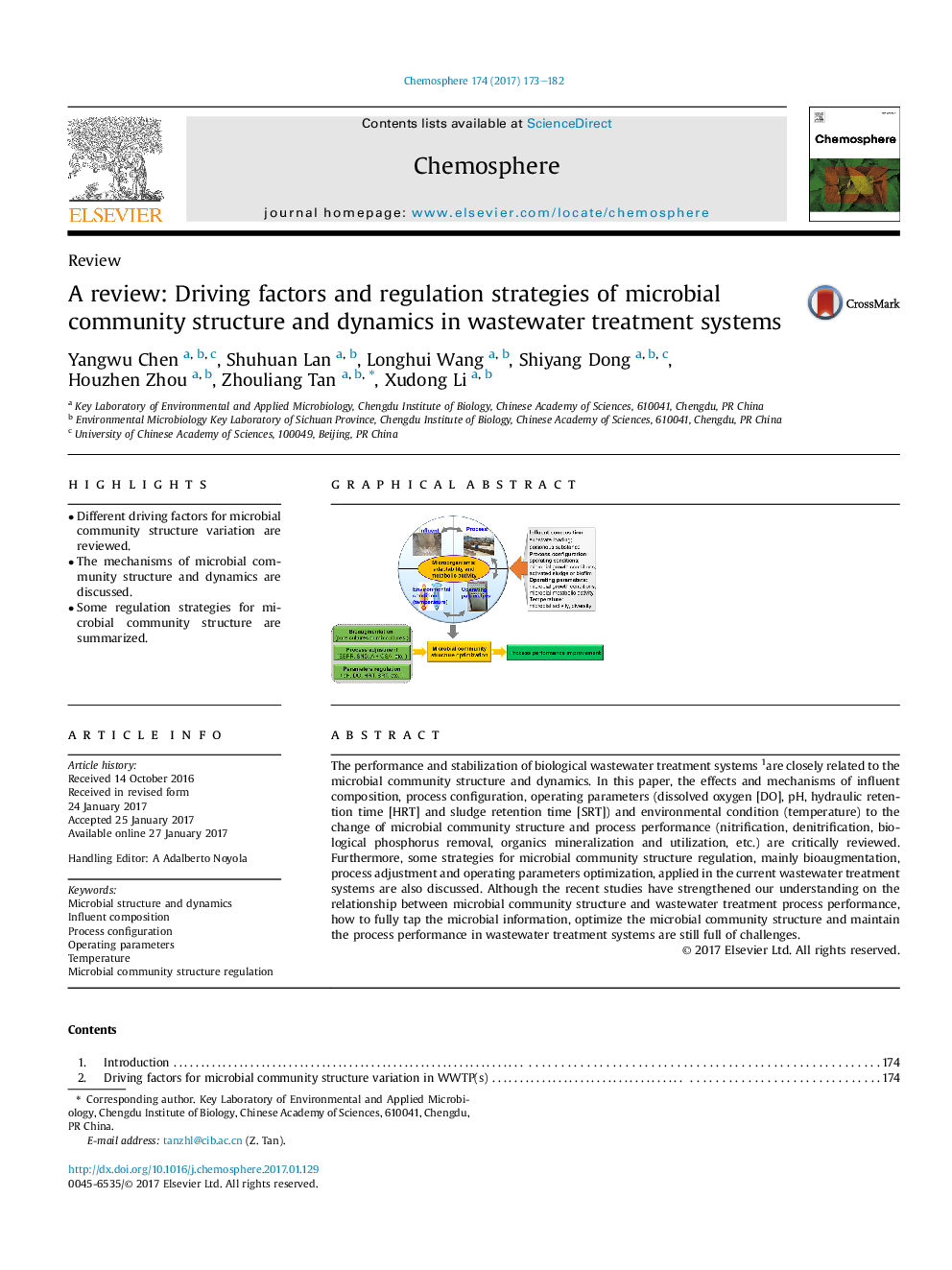| Article ID | Journal | Published Year | Pages | File Type |
|---|---|---|---|---|
| 5747346 | Chemosphere | 2017 | 10 Pages |
â¢Different driving factors for microbial community structure variation are reviewed.â¢The mechanisms of microbial community structure and dynamics are discussed.â¢Some regulation strategies for microbial community structure are summarized.
The performance and stabilization of biological wastewater treatment systems 1are closely related to the microbial community structure and dynamics. In this paper, the effects and mechanisms of influent composition, process configuration, operating parameters (dissolved oxygen [DO], pH, hydraulic retention time [HRT] and sludge retention time [SRT]) and environmental condition (temperature) to the change of microbial community structure and process performance (nitrification, denitrification, biological phosphorus removal, organics mineralization and utilization, etc.) are critically reviewed. Furthermore, some strategies for microbial community structure regulation, mainly bioaugmentation, process adjustment and operating parameters optimization, applied in the current wastewater treatment systems are also discussed. Although the recent studies have strengthened our understanding on the relationship between microbial community structure and wastewater treatment process performance, how to fully tap the microbial information, optimize the microbial community structure and maintain the process performance in wastewater treatment systems are still full of challenges.
Graphical abstractDownload high-res image (314KB)Download full-size image
